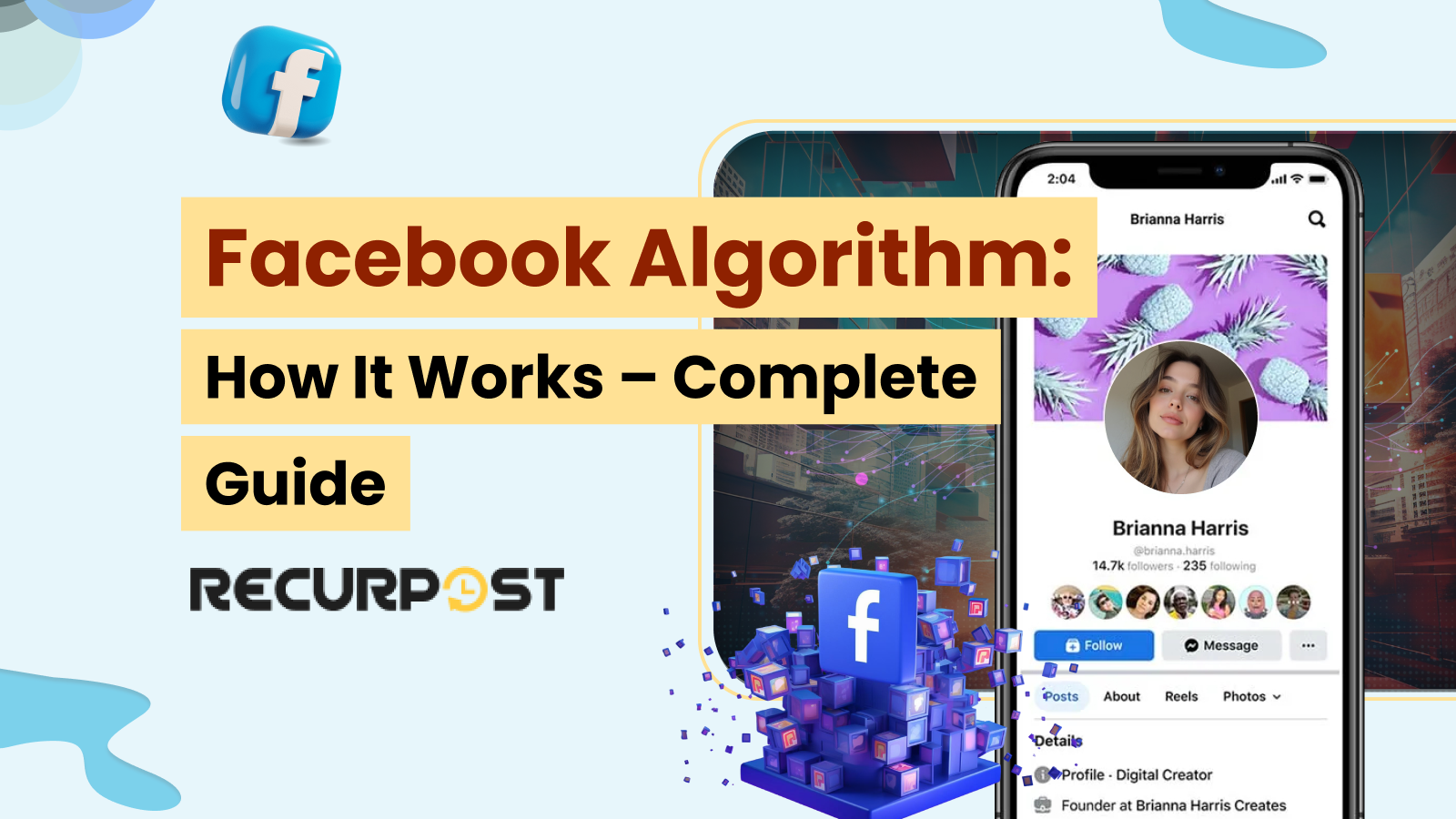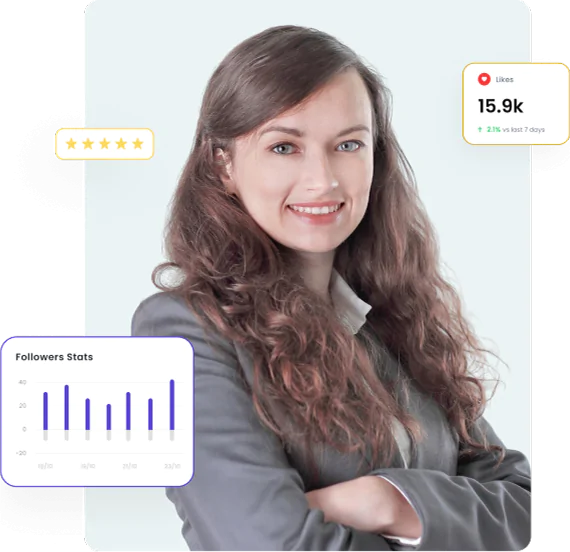In this competitive social media business, staying on top of an ever-changing Facebook algorithm is one of the most important yet challenging parts of our job. With over 3 billion monthly active users, Facebook remains a prime platform to reach audiences, while organic reach continues to decline each year.
It’s frustrating to spend hours carefully crafting social campaigns only to see our content show up in fewer and fewer feeds. It’s hard to break through without a solid understanding of how Facebook’s ranking algorithm works and the motivation behind constant updates.
This guide to Facebook’s social media algorithms explains why changes happen, how content ranking works, and provides actionable best practices for your strategy. The algorithm becomes manageable with the right approach.
Q. What is the Facebook Algorithm?
The Facebook algorithm is an automated system that ranks and determines which posts appear in each user’s News Feed. With billions of posts created daily across Facebook’s apps, the algorithm uses machine learning to evaluate content and display what it predicts users want to see.
Check out how Facebook distributes content.
Facebook’s constantly changing algorithm aims to show users the most relevant, interesting posts from the flood of content. Relevance depends on multiple ranking factors, including past interactions, profile information, group memberships, page follows, ad clicks, and more.
Have a look at Facebook’s approach to explaining ranking.
Next, we’ll examine some of the key factors impacting Facebook feed ranking.
How does the Facebook Algorithm Work?
Different segments of the Facebook algorithm operate with specific rules governing content distribution across various features.
Facebook Reel Algorithm
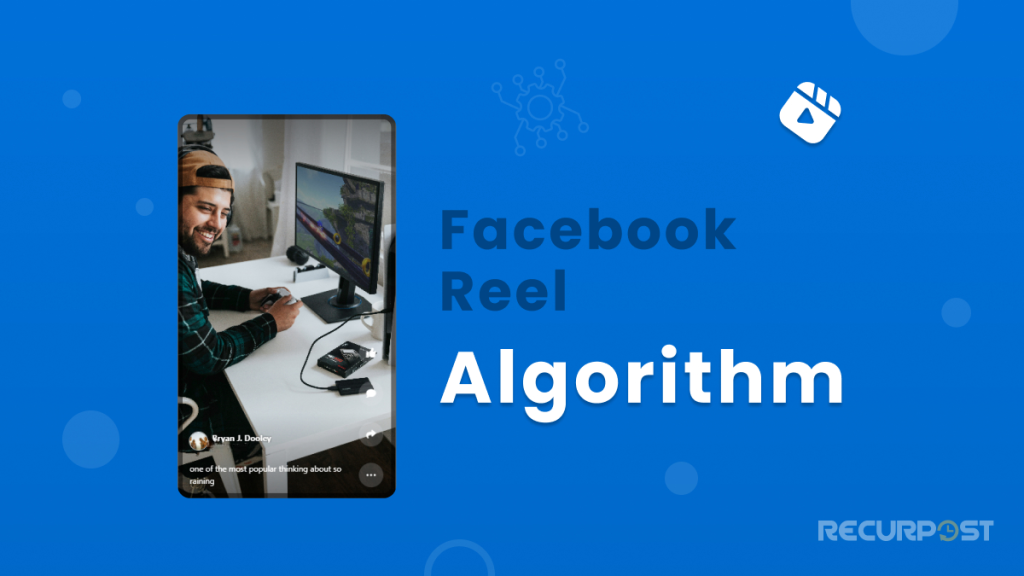
- Content Pool
This is like a vast library filled with all the reels available on Facebook, including those from your connections and even some from others. Every time Facebook needs to show you a reel, it looks through this entire library.
- Signals
Signals are clues that help the algorithm understand what’s important to you. These include who posted the reel, the type of content, and how others are interacting with it. For instance, if you often engage with dance videos, the algorithm takes note.
- Predictions
The algorithm tries to predict your reaction to each reel, whether you’ll like it, comment, share, or scroll past it. It makes these predictions based on your past behavior.
- Ranking Score
After considering the signals and predictions, the algorithm assigns a score to each reel. Reels with higher scores are more likely to appear in your feed, ensuring you see content that’s most relevant to your interests.
Facebook Story Algorithm
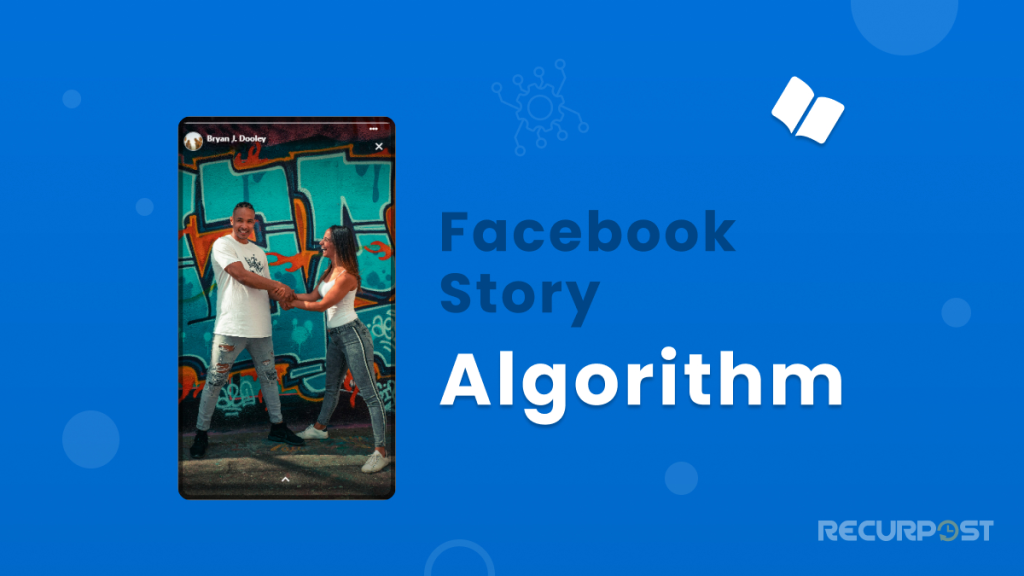
- Story Library
Imagine a huge library filled with all the stories available on Facebook. This includes stories from everyone you’re connected to and even some from others. The algorithm searches this library whenever it decides which stories to show you.
- Clues
These are small hints that guide the algorithm on what might be interesting to you. Clues include who posted the story, what type of content it is, and how people are engaging with it. If you frequently interact with a friend’s stories, the algorithm notices and shows you more from them.
- Anticipations
The algorithm tries to predict how you might interact with a story. Will you view it, reply to it, or simply skip it? These guesses are based on your previous activity. If you often engage with travel stories, you’ll likely see more of them.
- Interest Score
After evaluating all the clues and predictions, the algorithm assigns a score to each story. The higher the score, the more likely the story will appear at the top of your feed, ensuring you see what’s most engaging first.
Facebook Search Algorithm
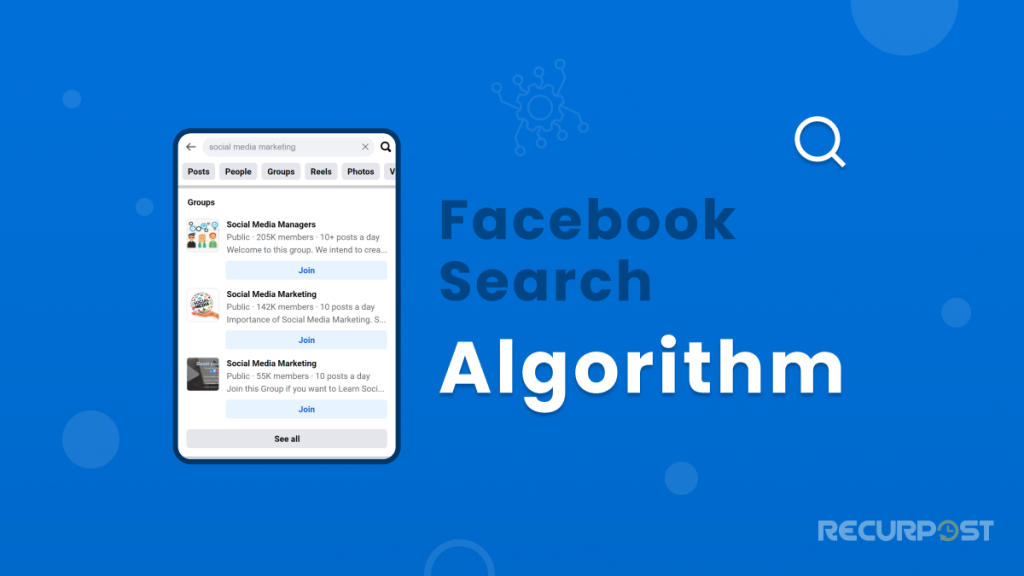
- Search Inventory
Think of Facebook Search as a giant catalog filled with all the available content on the platform. This includes profiles, pages, groups, events, and more. Whenever you search for something, the algorithm scans this catalog to find relevant results.
- Search Signals
These are the cues that help the algorithm determine what’s most relevant. Signals include things like your search history, interactions, and the popularity of the content. If you often search for tech news, the algorithm will prioritize similar results.
- Search Predictions
The algorithm tries to predict what you’re looking for based on your query and past behavior. It guesses which results you’ll find most useful, whether it’s a page, a friend’s profile, or a trending topic.
- Relevance Ranking
After gathering the signals and making predictions, the algorithm ranks the search results. The most relevant content appears at the top, helping you find what you’re looking for quickly and efficiently.
Facebook Video Algorithm
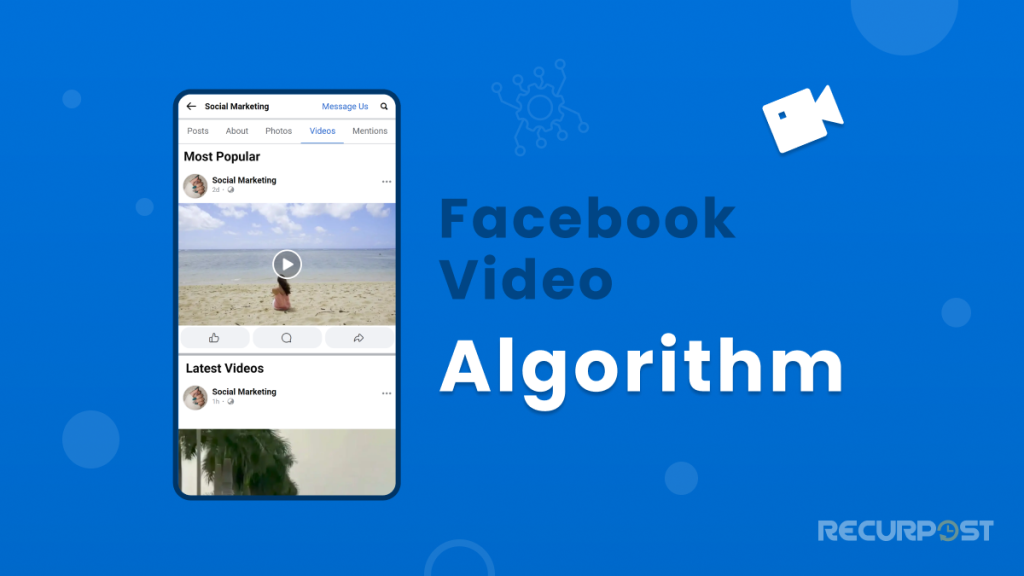
- Video Library
Think of this as a massive archive filled with all the videos available on Facebook. This includes videos from everyone you’re connected to and even some you aren’t. The algorithm sifts through this collection every time it needs to decide which videos to show you.
- Engagement Signals
These are like clues that help the algorithm determine what might catch your interest. Signals include who posted the video, its type, and how users are interacting with it. For example, if you frequently like and share gaming videos, the algorithm notices and shows you more of those.
- Behavior Predictions
The algorithm tries to predict what you might do with a video, whether you’ll watch it, react to it, or just scroll past. These predictions are based on your past interactions. If you often watch cooking tutorials, it will prioritize showing you more of them.
- Relevance Score
After considering all the signals and predictions, the algorithm assigns each video a score. Videos with higher scores are more likely to appear in your feed, ensuring you see content that’s most relevant to your interests first.
Facebook Video Algorithm 2025 Updates
Facebook video algorithm 2025 has introduced new ranking factors that prioritize video completion rates, audience retention metrics, and authentic engagement over vanity metrics.
The updated algorithm now weighs watch time more heavily than initial views, rewards videos that generate meaningful comments, and promotes content from creators who consistently publish original video content.
Facebook video algorithm 2025 also includes improved detection of recycled content and gives preference to videos with captions and accessibility features.
Facebook Feed Algorithm/ Facebook Post Algorithm
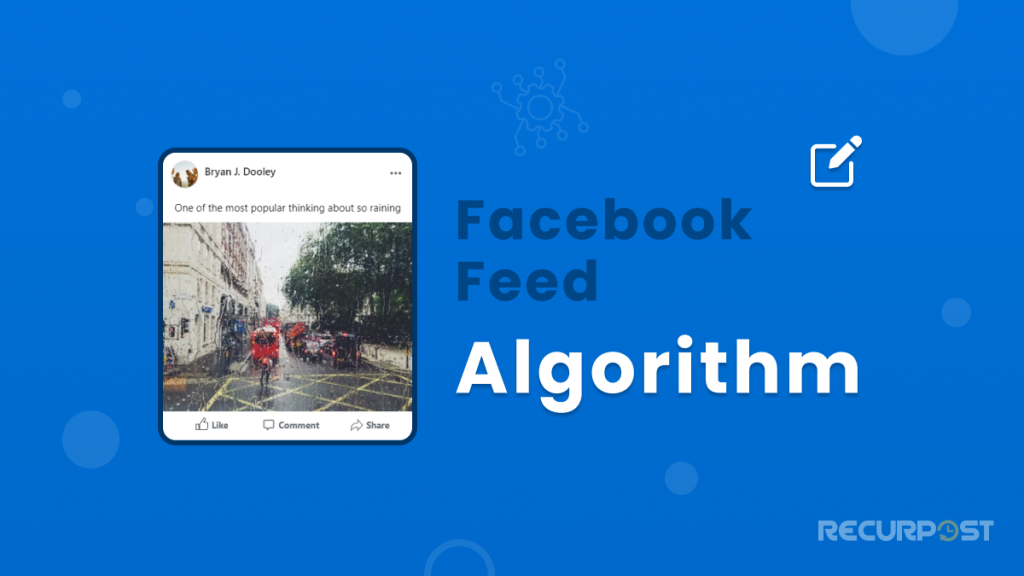
- Content Inventory
Think of your Facebook feed as a giant library filled with posts, videos, pictures, and stories from everyone you’re connected to and even some from others. The algorithm scans this library every time it decides what to show you.
- Engagement Signals
These are hints that guide the algorithm on what might be important to you. Signals include who made the post, the type of content, and how people are interacting with it. If you regularly engage with a friend’s posts, the algorithm will show you more from them.
- Predictive Analysis
The algorithm is smart! It tries to predict how you might interact with a post, whether you’ll like it, comment, share, or just scroll past it. It bases these predictions on your past behaviors. If you often watch videos on travel, it’ll show you more related content.
- Relevance Ranking
After gathering all the signals and making predictions, the algorithm assigns a relevance score to each post. Posts with higher scores appear higher in your feed, ensuring you see content that is most relevant and engaging to you first.
Facebook Marketplace Algorithm
- Marketplace Inventory
Imagine Facebook Marketplace as a giant warehouse filled with all the items people are selling. The algorithm checks this warehouse each time it needs to decide which listings to show you.
- Browsing Signals
These are like hints that tell the algorithm what might catch your eye. Signals include your past searches, the categories you’ve browsed, and the types of items you’ve interacted with. For example, if you often look at electronics, the algorithm takes note.
- Purchase Predictions
The algorithm tries to guess what you might do with a listing. Will you click on it, message the seller, or keep scrolling? It makes these predictions based on your shopping habits.
- Relevance Score
After evaluating all the signals and predictions, the algorithm gives each item a score. The higher the score, the more likely the item is to appear at the top of your Marketplace feed, ensuring you see the most relevant listings first.
Facebook Marketplace Search Tips
- To get the best results from Facebook Marketplace search, use specific keywords rather than broad terms when looking for items.
- Facebook marketplace search tips include filtering by location, price range, and category to narrow results effectively.
- Save searches for items you’re actively seeking, as this signals your interest to the algorithm and helps surface similar listings.
- Browse during peak hours when new listings appear, and check the “New Today” filter for fresh inventory.
- The algorithm learns from your browsing patterns, so consistently searching in specific categories will improve your personalized results over time.
Facebook Ad Algorithm
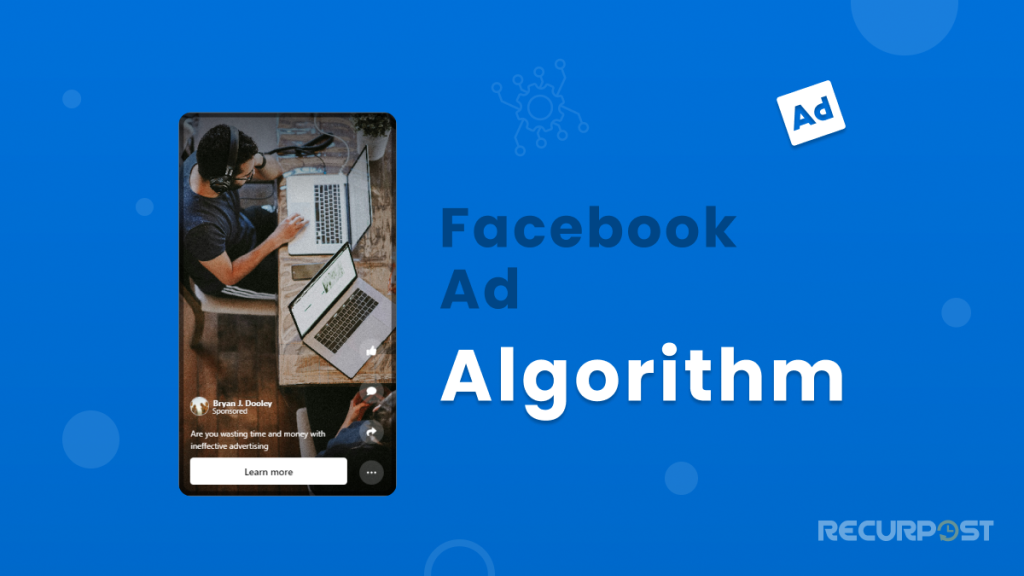
- Ad Inventory
Think of this as a vast marketplace where all available ads on Facebook are stored. The algorithm browses this inventory every time it needs to decide which ads to show you.
- Ad Signals
These are cues that help the algorithm determine which ads might interest you. Signals include your demographics, interests, online behavior, and interactions with previous ads. For example, if you often click on travel ads, the algorithm will prioritize similar ads.
- Predictions
The algorithm predicts how likely you are to engage with an ad, whether you’ll click, like, or make a purchase based on your past actions.
- Ad Relevance Score
After considering all the signals and predictions, the algorithm assigns a score to each ad. Ads with higher scores are more likely to appear in your feed, ensuring you see ads that are most relevant to you.
5 Strategies for Ranking Content with the Facebook Algorithm
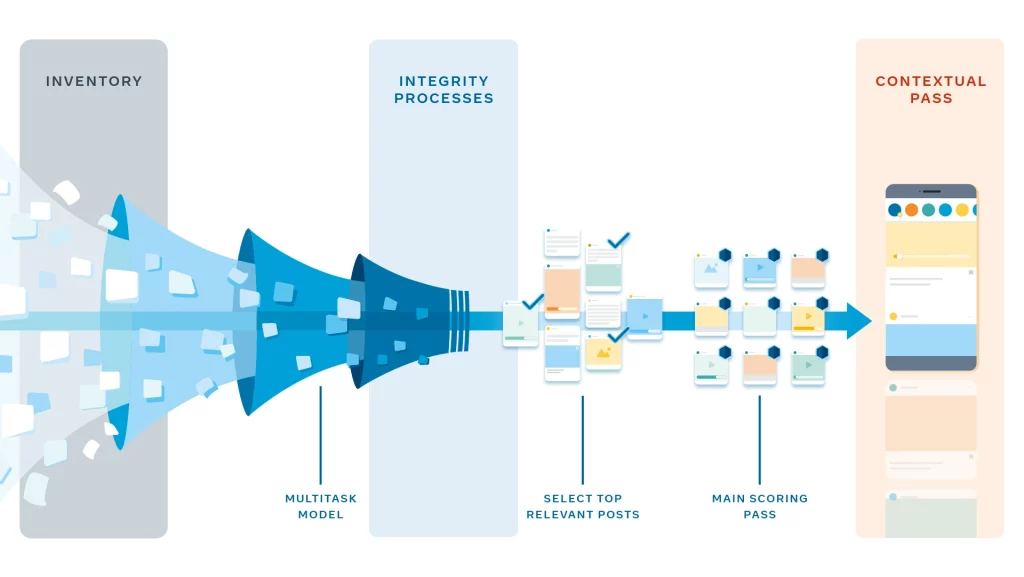
[Source: Facebook]
1. Quality Content
Focus on quality content by creating posts that are interesting, informative, or entertaining. High-quality content attracts more views, likes, and shares. Whether telling stories, sharing news, or teaching new concepts, well-crafted content keeps audiences returning.
2. Understanding Your Audience
Know your audience thoroughly. Understand their preferences and hobbies. When you grasp your audience’s preferences and behaviors, you can create content that speaks directly to them, similar to selecting a perfect gift for someone you know well.
3. Diversifying Content Types
Diversify your content types. Use videos, live sessions, photos, and user-generated content. Different post formats keep your feed fresh and engaging, allowing followers to find content they enjoy.
4. Optimizing Posting Times
To effectively reach your audience, understanding the Facebook algorithm’s best time to post is important. It’s a bit like setting up a lemonade stand on a sunny day when everyone is seeking refreshment. By sharing content when your audience is most active, perhaps in the morning, during lunch breaks, or in the evenings, you’re more likely to catch their attention and engage them.
5. Engagement
Create content that stimulates conversation. Ask questions, encourage comments, and respond to feedback. Your interaction with the audience increases their interaction with your content.
Major Updates and Changes in Facebook Algorithm
Facebook’s algorithm has seen some big changes over the years. Let’s take a walk down memory lane and see how things have evolved:
- August 2025 – Enhanced AI Content Detection and Creator Monetization
Facebook algorithm update in August 2025 introduced advanced AI systems for better content quality detection and expanded creator monetization options. The update prioritizes authentic creator content and reduces the distribution of AI-generated posts without proper disclosure.
- July 2025 – Video Algorithm Optimization and Feed Restructuring
Facebook algorithm update July 2025 focused on video content prioritization with new ranking signals for video completion rates and audience retention. The update also restructured feed algorithms to better balance video content with other post types.
- March 2023 – New Facebook Reels Features + 90-Second Video
Facebook introduced new features for Reels, including longer videos up to 90 seconds. Additional surfaces for discovery were added to increase circulation. This update signals Facebook moving towards more immersive, entertaining content.
- June 2022 – FB Algorithm Changing to Better Compete with TikTok
Facebook tweaked its algorithm to keep up with TikTok’s growing popularity. This meant focusing more on what keeps users entertained and engaged, just like TikTok does.
- April 2022 – Instagram Ranking to Highlight Original Content
Instagram, which is part of the Facebook family, started giving more love to the original content. This change was all about encouraging creators to come up with their unique stuff.
- Feb 2022 – Facebook Rebrands “News Feed” to the “Feed”
Facebook changed the name of its ‘News Feed’ to just ‘Feed’. It might seem like just a name change, but it was part of a bigger plan to make the platform more about connecting with others and less about news.
- April 2021 – Facebook Launches Tests for Future Changes to the News Feed
Facebook began testing new ways to change the News Feed. They wanted to make sure that the feed would keep showing stuff that’s interesting and important to you.
These changes demonstrate Facebook’s continuous evolution to improve user experience. Tracking updates helps detect algorithm shifts early and adapt strategies accordingly.
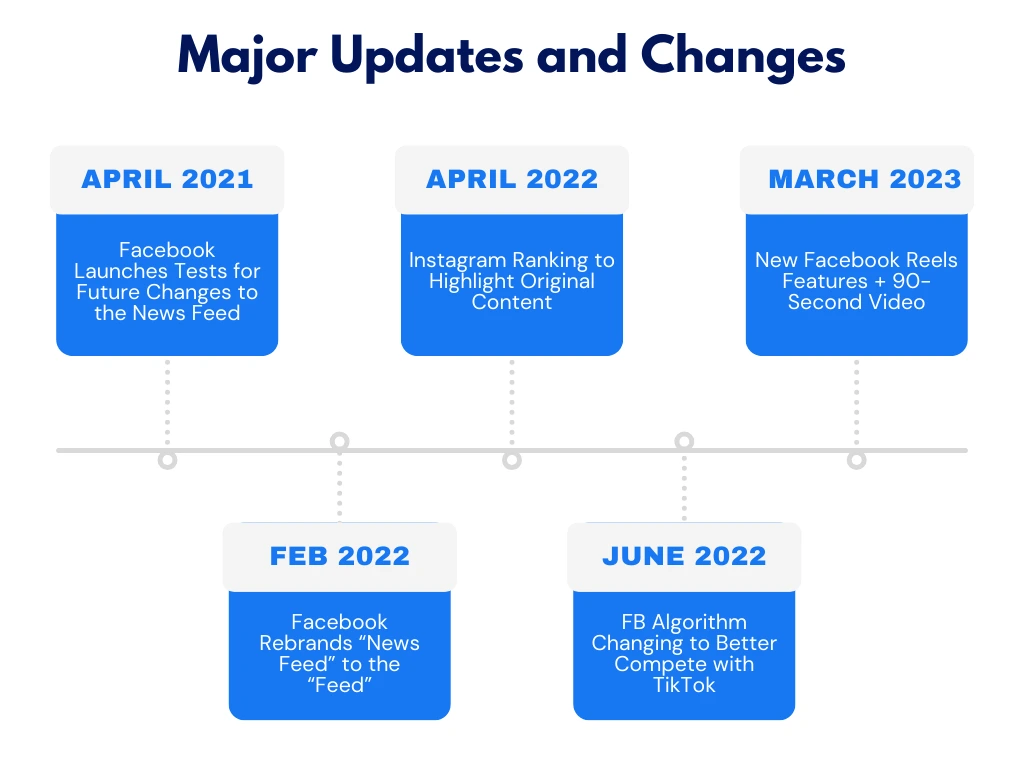
Next, we’ll cover helpful additional insights for staying ahead of changes.
Additional Facebook Algorithm Insights
Several additional considerations about Facebook’s algorithm benefit social media managers, including algorithm myths, ethics, future predictions, and platform comparisons.
1. Algorithm Myths
Common Facebook algorithm myths:
Myth: A big misconception is that it hides some Facebook posts on purpose.
Fact: That’s not true. The algorithm just tries to show you what you’ll like the most. There is nothing like it that hides the scheduled Facebook posts.
Myth: Posting at a specific time is the golden rule.
Fact: Knowing your audience’s peak activity times is important, but algorithm updates and individual user behavior can also alter this.
Myth: A common misconception is that only video content or Reels succeed now.
Fact: While video is strongly prioritized, the reality is that high-quality content in any format tailored specifically to your audience will still perform based on relevance.
Myth: There’s a specific list of Facebook algorithm words to avoid that will automatically decrease your reach.
Fact: While there’s no official blacklist of Facebook algorithm words to avoid, the system does identify and may limit distribution of content containing misleading claims, clickbait language, or engagement bait phrases like ‘share with friends’ or ‘comment below.’ Facebook algorithm words to avoid include excessive use of “urgent,” “limited time,” “act now,” “click here,” “you won’t believe,” and other sensationalized language that triggers spam detection. The algorithm also flags repetitive promotional language, excessive capitalization, and posts asking for likes, shares, or comments without adding value. Focus on authentic, valuable content rather than worrying about specific words.
Also, check if your Facebook scheduled posts are not working.
2. Ethical Considerations
The Facebook algorithm raises several ethical concerns:
- Filter bubbles and echo chambers: The algorithm can create personalized newsfeeds that limit exposure to diverse viewpoints.
- Privacy concerns: How much data is collected and used to personalize content? Is transparency enough?
- Manipulating user behavior: Can the algorithm be used to sway opinions or influence elections?
- Facebook algorithm issues: Several concerns have been raised about potential biases, content moderation challenges, and the impact on mental health. These Facebook algorithm issues continue to be addressed through regular updates and transparency initiatives.
Staying informed about these ethical debates and advocating for the responsible use of the algorithm is important for ensuring a healthy online environment.
3. Future Predictions
Potential future algorithm developments:
- Focus on AI and personalization: Machine learning may further tailor content to individual preferences and predict user behavior with even greater accuracy.
- Rise of immersive experiences: Augmented reality and virtual reality integration could transform how we interact with content on Facebook.
- Prioritizing authentic connections: The emphasis on meaningful interactions may continue, encouraging genuine conversations and community building.
Adaptability and creating valuable content that fosters genuine connection prepare you for future algorithm changes.
4. Comparative Analysis
Facebook’s algorithm differs from other platforms: Twitter prioritizes recent posts, Instagram emphasizes visual content, and LinkedIn focuses on professional content. Understanding these differences enables better cross-platform content strategies.
How to Reset Facebook Algorithm?
There are a few methods that help you reset your Facebook algorithm.
1. Clear Search History: The easiest way to reset your Facebook algorithm is to clear your search history. You have to directly go to your activity log, which holds access to your search history. Remove it completely. This can allow you to set a new search history based on your latest activities.
2. Review & Adjust Preferences: Go to settings > News Feed Preferences and update who you would like to see first, follow people, groups, pages, and people whose content interests you. Unfollow people, pages, and groups whose content you wouldn’t like to see.
3. Engage with Desired Content: Actively engage with posts, pages, and friends whose content appeals to you. Save and interact(like, share, different reactions, comment) with your choice of posts so that the Facebook algorithm can pick up your interactions.
4. Hide or Report Content: Click on the three dots at the top right corner of any post and select the “Hide Post” option to see fewer similar posts. Report posts with irrelevant or inappropriate content. This helps the Facebook algorithm to understand your preferences.
5. Review Ad Preference: Go to Settings > Ads > Ad Settings and manage your ad preferences.
Steps to Take Regularly
- Regularly Update Preferences: Keep your preferences updated to reflect your current interests.
- Engage Consistently: Regular interaction with desired content will continuously refine your feed.
- Provide Feedback: Use Facebook’s feedback options to help the algorithm understand your preferences better.
By actively managing these aspects, you can effectively reset and tailor the Facebook algorithm to better match your interests and preferences.
Conclusion
The Facebook algorithm shapes social media experiences through content quality, user engagement, and personal preferences. Social media managers must stay adaptable and informed about algorithm changes.
Success on Facebook requires adapting to the algorithm while maintaining engaging, relevant content. Staying updated and creative enables thriving in Facebook’s changing landscape.
This strategy is just one factor influencing Facebook’s algorithm. For a detailed breakdown of social media algorithms, explore our guide: Social Media Algorithms.
Frequently Asked Questions
1. What is the Facebook algorithm?
The Facebook algorithm is an AI system that ranks and determines the order of posts in users’ Feeds. It aims to create a personalized, relevant feed for each person.
2. How does the Facebook algorithm decide what content I see?
The algorithm analyzes posts based on predicted relevance to you using signals like pages followed, past interactions, interests, recency, content quality, and engagement from others. It gives each post a relevance score.
3. Can I influence the Facebook algorithm to favor my content?
Yes, by publishing content that generates authentic engagement and positive signals from real users. Use best practices around understanding your audience, encouraging interaction, analyzing competitors, etc. But be ethical.
4. Why is my Facebook reach declining, and how can I improve it?
Competition has increased while organic reach has declined intentionally by Facebook. Ensure content quality is high, boost engagement from ideal audiences, and diversify content types. Stay on top of algorithm updates as well.
5. How often does the Facebook algorithm change?
Frequently – sometimes multiple times per year. Changes often focus on reducing inflammatory content and political posts in favor of friends/groups and discovery.
6. Can you reset the Facebook algorithm?
No, there are no options to reset personalization or fully refresh signals. Creating a new page may temporarily help, but best to focus efforts on high-quality, audience-aligned content.
7. Is there a secret time to post for better reach?
While peak engagement times can vary, focusing on quality and consistent posting is more impactful than fixating on a specific hour.
8. Do paid ads guarantee top placement?
No, organic reach plays a role, and quality content is key to achieving a good balance. Paid ads can boost your visibility, but organic engagement builds long-term success.

Saurabh Chaturvedi is a content writer at RecurPost. Specializing in social media management and marketing, Saurabh is dedicated to crafting engaging and informative articles. His passion for clear, exciting content keeps readers eager for more.

